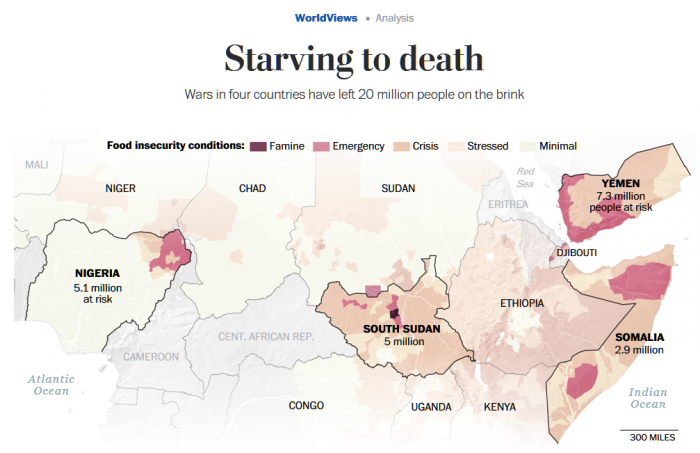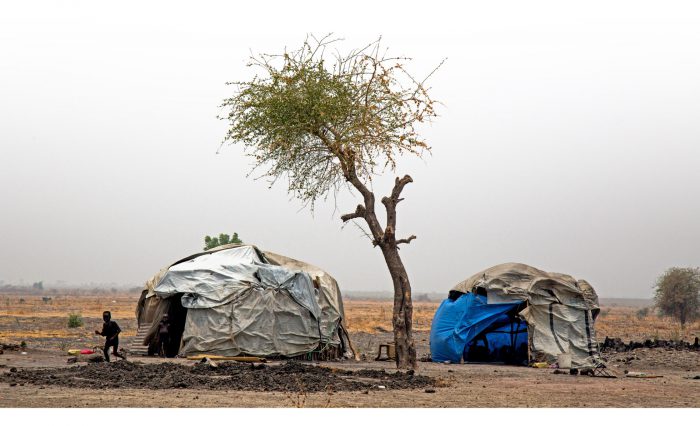こんなことが放っておかれていいのだろうか。FaceBookでコロンビア人の友人が警告する。正面から向き合い闘う人もいるが、多数は気づかない、または気づかないふりをする。または、忘れてしまう。
ワシントンポストの記事より April 11, 2017
Our world produces enough food to feed all its inhabitants. When one region is suffering severe hunger, global humanitarian institutions, though often cash-strapped, are theoretically capable of transporting food and averting catastrophe.
But this year, South Sudan slipped into famine, and Nigeria, Somalia and Yemen are each on the verge of their own. Famine now threatens 20 million people — more than at any time since World War II. As defined by the United Nations, famine occurs when a region’s daily hunger-related death rate exceeds 2 per 10,000 people.
The persistence of such severe hunger, even in inhospitable climates, would be almost unthinkable without war.
Each of these four countries is in a protracted conflict. While humanitarian assistance can save lives in the immediate term, none of the food crises can be solved in the long term without a semblance of peace. The threat of violence can limit or prohibit aid workers’ access to affected regions, and in some cases, starvation may be a deliberate war tactic.
Entire generations are at risk of lasting damage stemming from the vicious cycle of greed, hate, hunger and violence that produces these famines. Children are always the most affected, as even those who survive may be mentally and physically stunted for life. And while this article focuses on the four countries most immediately at risk, ongoing conflicts in Congo, the Central African Republic, Libya, Iraq, Syria and Afghanistan has left millions hungry in those places, too.
By Max Bearak and Laris Karklis


